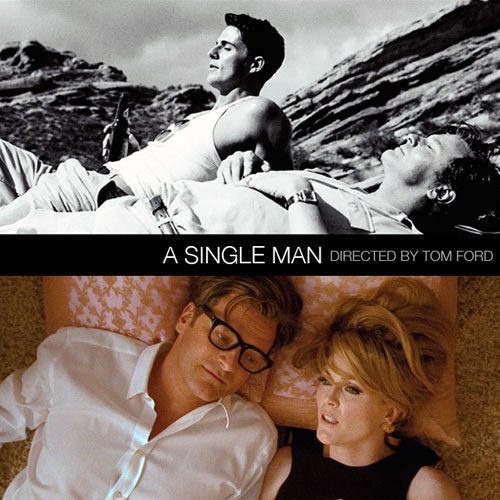
(Photo courtosy of Stanzedicinema )
In his Oscar-nominated role in Tom Ford’s A Single Man, Colin Firth plays a man unable to express his profound grief, going through the motions of a life he now finds empty.
Firth excellently portrays this silent pain, making the audience see through his eyes throughout the entire film.
He plays gay British professor George Falconer, living in L.A. in the 1960s. His partner Jim, played by Matthew Goode, of 15 years was tragically killed.
Jim makes haunting and explanatory appearances in flashbacks throughout the film.
The film’s most powerful scene comes near the beginning when Falconer hears news of his lover’s death from Jim’s cousin, who calls against the family’s wishes.
Falconer is told the funeral service is to be “just for family,” and is left clutching the phone with his world shattered around him.
Firth’s character remains in a state of aftershock, always seeming to be wondering whether he will wake up from a bad dream.
The theme of drowning imagery is visible throughout the film, reinforcing George’s feelings of helplessness and surrender.
The entire film, based on Christopher Isherwood’s novel A Single Man, takes place during a single day in 1962—the day that George decides will be his last.
He rigidly and, at times, comically prepares for his suicide, tying up loose ends at work and with old friends.
In this state of mind, George begins to see things differently, finding beauty in everyday things he had taken for granted.
However, there is no shortness of beauty in this film, so that doesn’t seem like a very difficult task.
Besides Firth’s moving performance, the film’s appeal is in it’s visual beauty.
Tom Ford brought exquisite aesthetics to every aspect of his first film’s art direction, almost to where it looks a little too perfect.
The cast looks more model than actor. All the female students resemble Bridgette Bardot and smoke cigarettes in class.
Everyone is impeccably dressed and accessorized, including Falconer, who specifically requests to wear a “Windsor knot” at his funeral in his suicide note.
Ford’s success as creative director of Gucci and Yves Saint Laurent, along with his experience in fragrance, eyewear and menswear, clearly influences the film.
His eye for detail is obvious in every scene. No detail goes unnoticed, from George’s vintage Mercedes to his monogrammed stationary.
Ford’s Parson architectural background is also apparent in the set design choices for George’s gorgeous modern Lautner house and Charley’s (Julianne Moore) decadent décor.
Ford’s creative endeavors all bear his signature glamorous look and seem to blend together at times.
His bold logo typography is used for the title of the film, and actor Nicholas Hoult is a model in his newest eyewear ad campaign.
Twenty-year-old Hoult has certainly grown up well since his role in 2002 as the loveable, chubby, bowl-cut boy opposite Hugh Grant in “About A Boy.”
He plays Kenny in A Single Man, a curious and somewhat stalker-like student.
Kenny is a sweet, naïve and guardian-angel-like figure who intuitively senses his professor’s pain and tries to get him to open up.
However, the obvious sexual tension between them can be uncomfortable as their age difference is magnified by the fact that Kenny looks about 14.
Other than Kenny, Julianne Moore’s character Charley is the only person still linking Falconer to the real world, although she is far less perceptive to his troubles.
A dear friend and former lover, Charley is the only person Falconer can confide in about Jim.
Charley resembles a sad, older version of Holly Golightly who never found her Paul Varjak.
She is never without a drink or a cigarette, and is desperately trying to return to her lost youth.
She wears jewelry and makeup to bed and sits around in her lavishly decorated home with nowhere to go.
Although she is insensitive to Falconer’s despair and childishly wishes they could return to how things once were, she comforts Falconer by letting him know he is not alone.
Clearly a visual person, Ford displays Falconer’s emotions in particular scenes through the varying brightness of colors.
When Falconer notices a beautiful girl’s smile, her mouth turns bright red. His complexion visibly brightens when Kenny stops to ask him how he’s feeling.
The contrasts enhance the artisstic aspect of the film, but Firth’s acting portrays his emotions so well that the audience does not require the visual reminders.
The time period lends a theme still relevant today. In a time when people lived in a constant state of fear of nuclear war and of an invisible enemy, Falconer represents the gay community as an invisible victim.
“If the minority is invisible, the fear is much greater,” Falconer says to his class under the guise of discussing their reading.
“Fear is being used as a tool to manipulate our society. It’s how Madison Avenue sells us things we don’t need.”
Although the reason for Falconer’s internal pain is directly related to the time period, the theme of quiet suffering is still relevant today and is a subtle reminder to be perceptive to the emotions of those around us.











